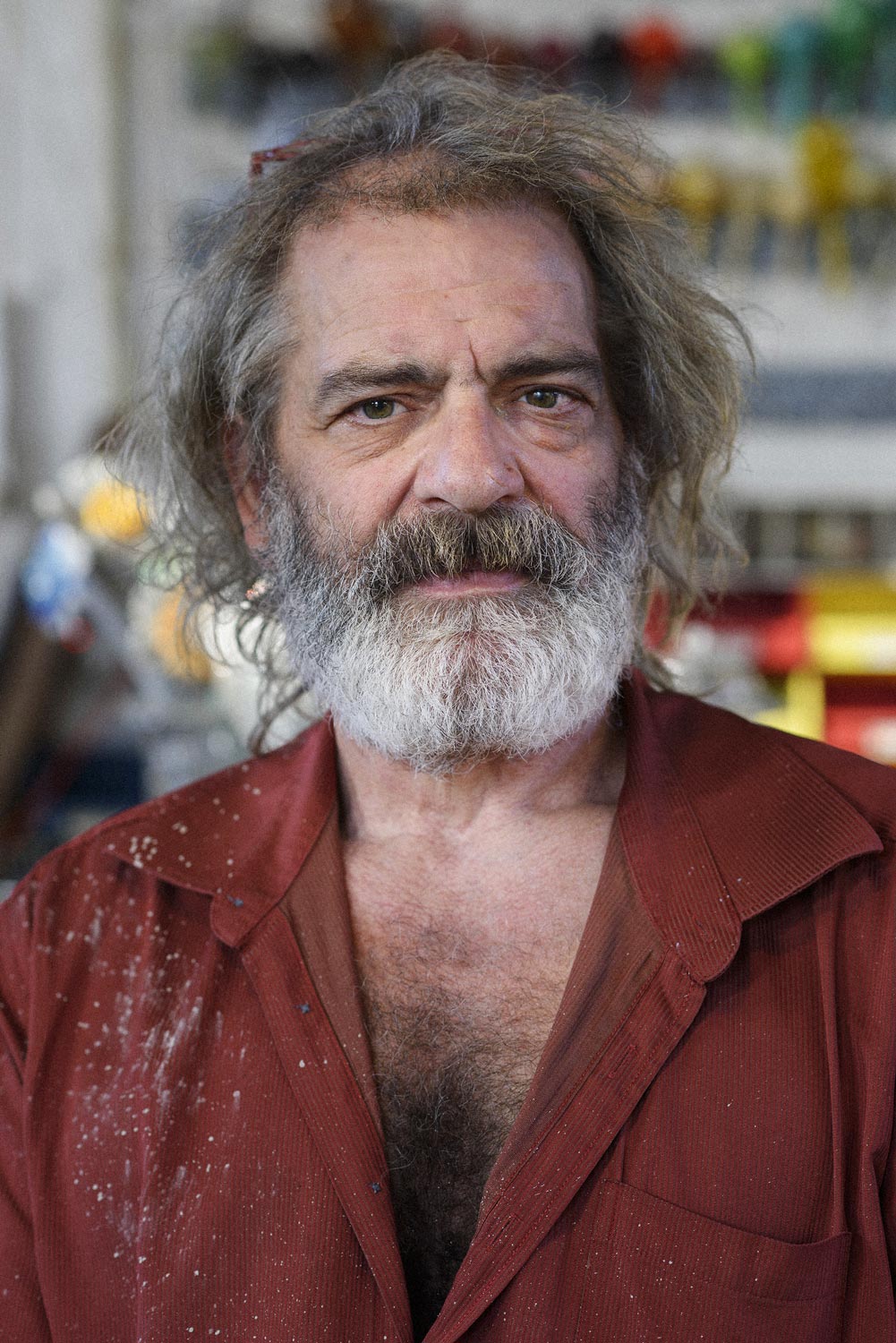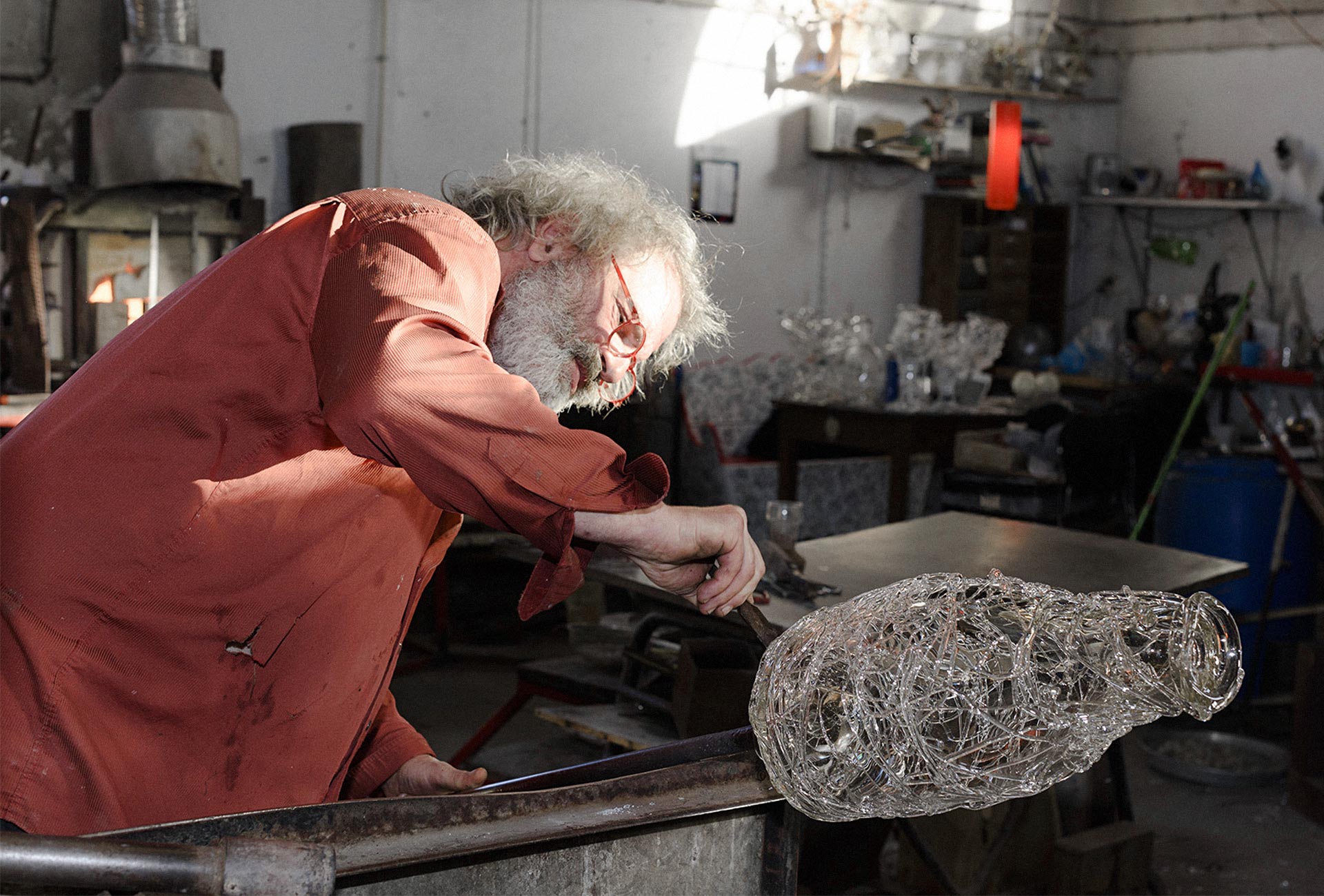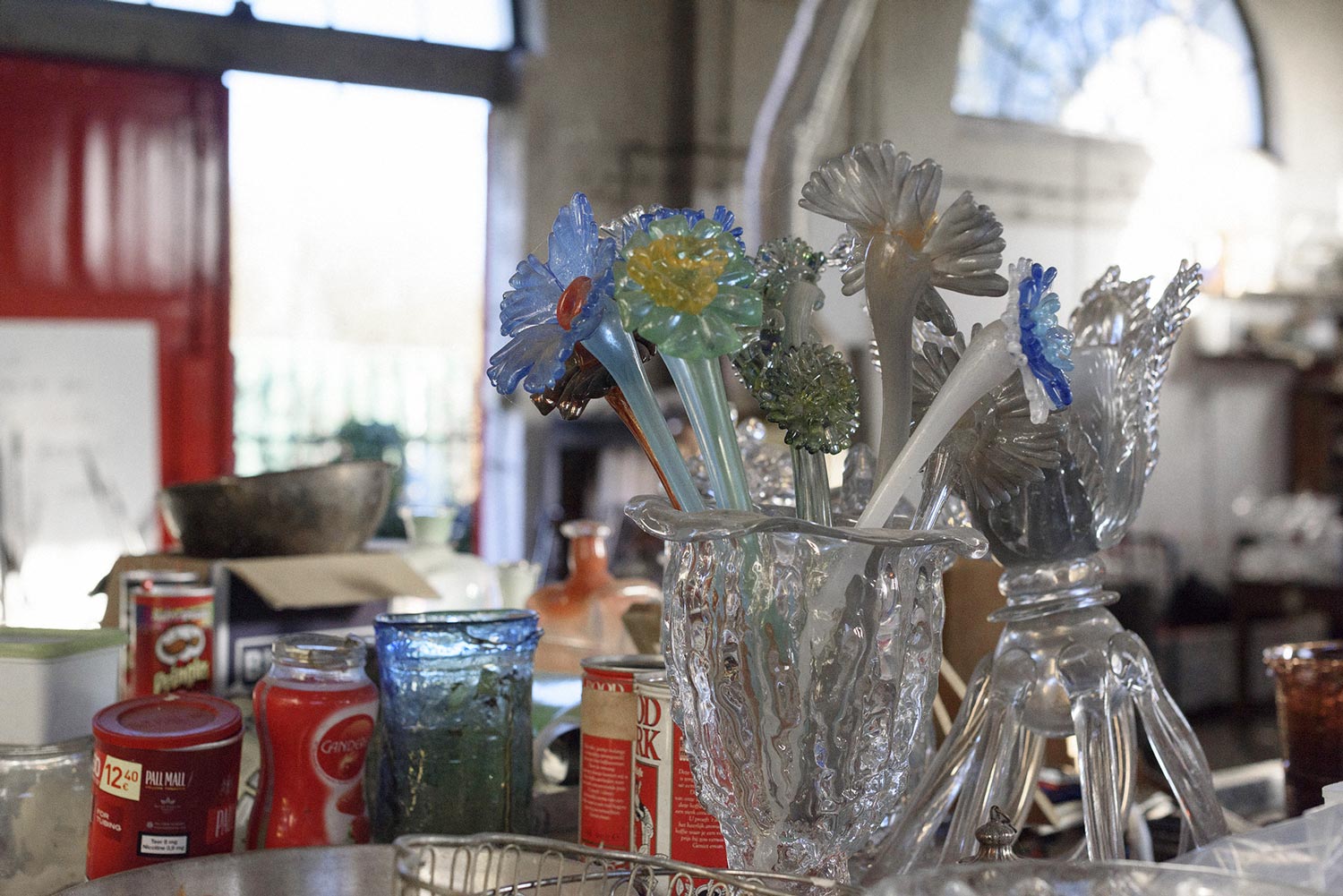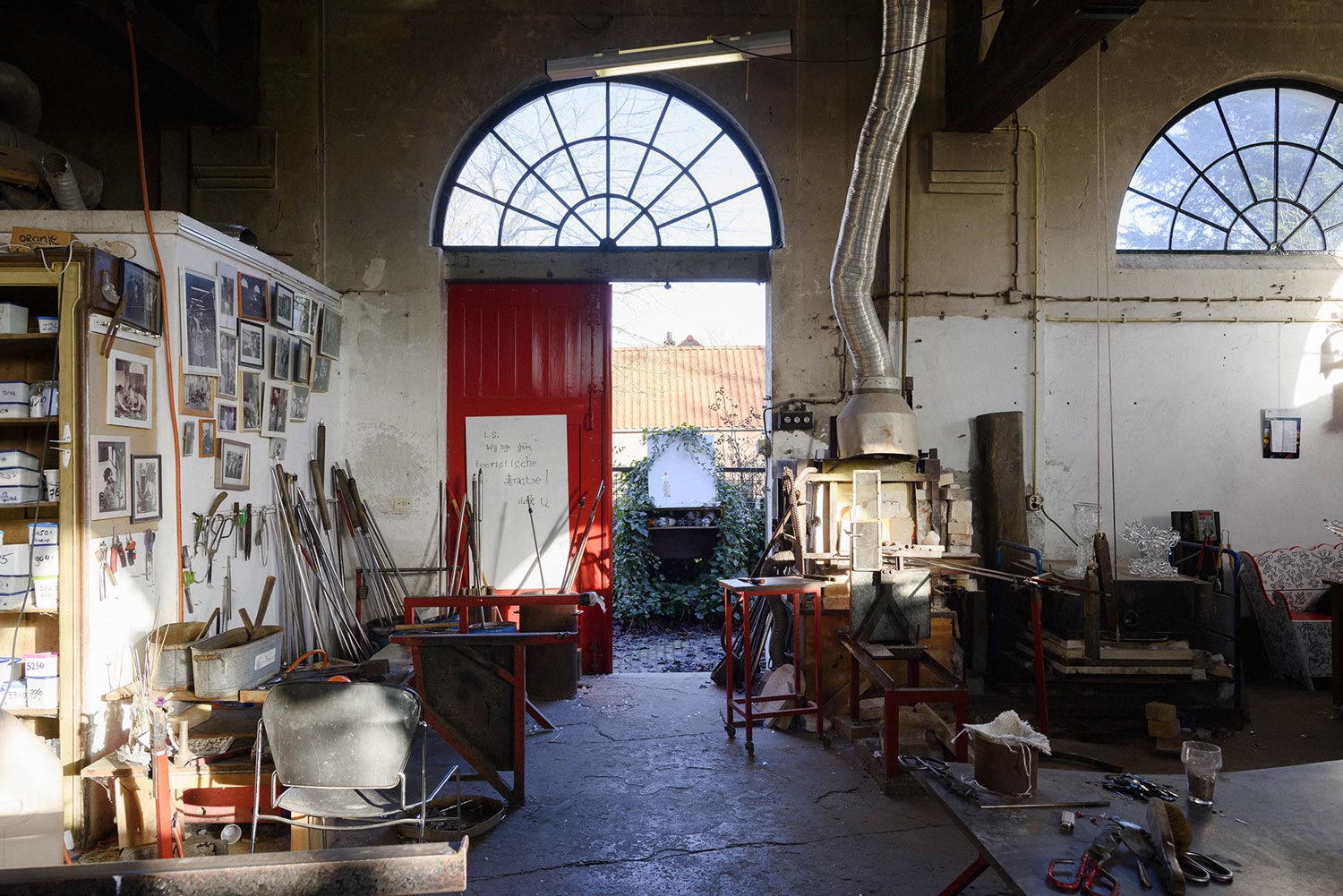Since the time of the De Stijl and the Bauhaus movements many artists and designers from the Netherlands cultivate reduced shapes. Bernard Heesen’s work obviously represents a counterpoint of these constructivist, reduced forms. The clear form is not for the artist, who was born in the Dutch city of Leerdam in 1958. Rather, he is known as something of an anarchist in glass art. With the force of a titan he labours in his workshop de oude Horn in Acquoy, close to the city of his birth, on the hot, viscous material. Driven by unfettered curiosity and an eagerness to experiment he creates expressionist objects of glass. At first glance they appear to satisfy merely a desire for baroque opulence. Yet even if Bernard Heesen draws inspiration from 19th century encyclopedias for many of his recent works, there is still another element to it. Contrary to the systematically ordered flourishes and volutes of his historical models his pieces hold a nonchalant playfulness and moments of the absurd or surreal. The glass artist also demonstrated his spontaneous joy of experimentation when he discovered the work of Heer Jeekel (1839–1885). The glass manufacturer and mayor of Leerdam produced an early version of industrial moulded glass. Without hesitation Heesen took up the technique. Yet he also used second-hand glass, which he found at flea-markets or in attics, to integrate into his pieces by means of silicon glue.
What was it that sparked your interest in glass in the first place?
Bernard Heesen In the beginning, although my father was a famous glass designer for the Royal Leerdam glass factory, I was not interested in glass at all. While I was studying architecture my father started his own hot glass studio and there I saw the hot glass for the very first time. I was intrigued by this strange material: hot, liquid and transparent, completely the opposite of the cold and rigid glass everyone knows. Not trained as a glassblower I started to explore the qualities of this strange material not hindered by any knowledge of the technique of glassblowing. I was so intrigued by glass that I decided to continue. As an “official” start to my career I climbed into the volcano Etna to blow bubbles of hot lava. When I got home I realized the glass furnace was more suitable than a volcano. And until now I still explore the strange qualities of glass.
Did you have any role models? And, if so, who influenced you most?
This was no artist or designer. It was the 80-year-old Dutch maestro Jan Keuken, who worked his whole life for the glass factory Leerdam. He taught me to understand the material.
In your older vessels one can recognize a relation to paintings. How did you come to this interesting technic and why did you stop with it?
I consider a vessel to be like a canvas for a painter, very suitable to make paintings with glass. And the technique I used was very simple; the results often did surprise me…
How did you come to your recent baroque forms, especially since in your country there is a strong tradition in minimalism? What was your motivation to create things that seem to belong to a time when absolutistic rulers governed Europe?
After ten years of exploring glass I came to a dead end. I didn’t know what to make anymore. But, thanks to my life-long fascination with 19th century encyclopedias I was saved. Suddenly I realized that those encyclopedias that I was collecting were packed with beautiful black and white engravings begging to be reproduced in glass. More so because most of those engravings dated from the late 19th century, the so called “ugly times”. I think glass is the most suitable material for making ugly things. After that I concentrated also on the artifacts that were exhibited at the world exhibition at Crystal Palace in 1851 in London.
What do you think about the relation between art and craft or, more precisely, between a glassblower and a sculptor?
That relationship does not exist for me. I am a sculptor with glass and they call me a glassblower.
Some of the younger glass artists, particularly in Europe, have a strong desire to relinquish the vessel shape and create sculptural objects instead. Is this really advisable?
Who cares, it is only because of their strong desire to be considered an artist. Vessels can be perfect.
How do you see the current and future situation of artistically created glass? Has the so-called Studio Glass Movement enough young interested people?
The Studio Glass Movement has died a long time ago. It is too difficult and expensive to make your own art at your own studio.
Which do you think are the countries where the most exciting developments of glass art can be observed nowadays? And can you give us some names that you consider important?
As you might have concluded, I am really not interested in glass art. Glass art is boring except for some art created by great artists and executed by really well trained glassblowers.
Here you’ll find some works of Bernard Heesen













